
I have chosen San Francisco as my first case study, because the West Coast still has a strong aura for me, having never personally been there before. On photos, this area of California has to me some of the most beautiful natural scenery in the world and an excellent climate. Furthermore, the US not being very densely populated, much of the surrounding countryside, especially northwards, is free of civilization, not something one is likely to find in Europe. San Francisco is the second most densely populated city in the country after New York, another big draw for me. It's a city full of history, a strong urban culture, and a hopeful future thanks to being at the heart of the high-tech industry. It's a city I could see myself living in.
San Francisco is divided up into dozens of distinct neighborhoods. I won't analyze all of them, that would take a very long time. Many of them, especially out towards the edges of the city, are just like any other suburb in the US, so that immediately disqualifies them for me as being of any interest. The six I have chosen are very urban areas, established for at least 100 years. They're areas many of you will know at least a little about, or seen them in movies or on television. They're the greatest hits of San Francisco, home to the urban elite of the city. They're trendy and wealthy, for the most part, a common theme among the neighborhoods I like the world over because they tend to be most attractive. I'm a perfectionist, and I expect the same from my cities. I enjoy clean, well-kept areas, but beauty is more important to me. Hence, the areas I like tend to be wealthy, historical parts of cities, the more quirky aspects the better. There was plenty of that in my long time home, London, and plenty of it in San Francisco. The city is lucky to have such a hilly disposition, for it greatly enhances the city's neighborhoods, many of which have impressive views downhill and beyond to the water and Golden Gate Bridge. The neighborhoods I will be looking at:
1.1 Marina
1.2 Cow Hollow
1.3 Pacific Heights
1.4 Presidio Heights
1.5 Russian Hill
1.6 Telegraph Hill
Be sure to click on each to view the full case study.
Quick summaries of the neighborhoods:
Quick summaries of the neighborhoods:
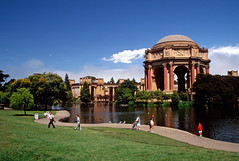 |
| flickr : ken mccown |
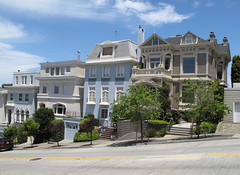 |
| flickr : Anomalous_A |
Pacific Heights
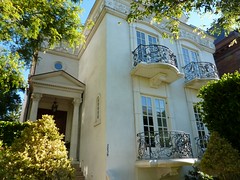 |
| flickr : SLDdigital |
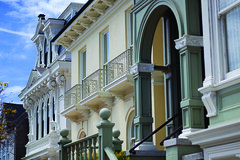 |
| flickr : Pacific Union International |
 |
| flickr: John Weiss |
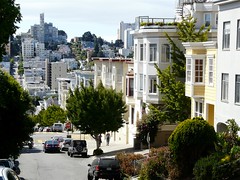 |
| flickr : b00nj |
There we have it, the six San Francisco neighborhoods that form my case study. Besides giving a detailed view of the areas and analyzing urban aspects, I will feature local real estate and historical photos.
